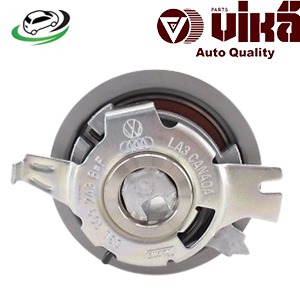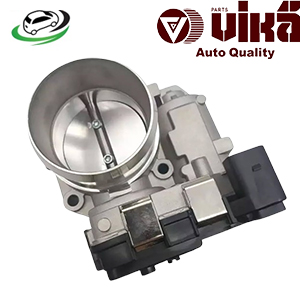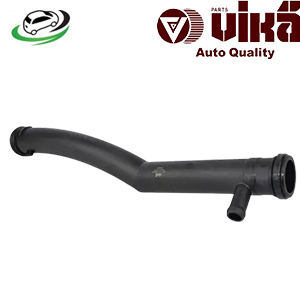-9%
Get AUDI A1 Sportback (8XA 8XK)/ AUDI A3 Hatchback (8P1) / VW Touran I (1T1 1T2)/ Eos (1F7 1F8)/ Tiguan I (5N)/ Jetta Mk6 Radiator Coolant Pipe 03C121065B
The radiator coolant pipe is part of the vehicle’s broader cooling system, responsible for carrying coolant to and from the engine and radiator. The cooling system in a vehicle ensures that the engine temperature remains within an optimal range, preventing overheating that could lead to engine damage or failure.
The radiator coolant pipe is a flexible or rigid tube made from various materials, including rubber, plastic, or metal. It is specifically designed to handle high-pressure, high-temperature conditions as it carries the coolant, a mixture of water and antifreeze, throughout the engine. These pipes must be durable, heat-resistant, and capable of withstanding continuous exposure to coolant and heat.
2. How Does a Radiator Coolant Pipe Work?
The cooling system relies on the coolant—a fluid that absorbs and dissipates heat—to keep the engine from overheating. The radiator coolant pipe serves as the primary conduit for this fluid, channeling it through different parts of the engine to ensure optimal temperature regulation.
Here’s how it works:
- Coolant Circulation: The engine generates a significant amount of heat during combustion. As coolant circulates through the engine block and cylinder head via the pipes, it absorbs excess heat from the engine.
- Heat Transfer to Radiator: Once the coolant absorbs the heat, it travels through the radiator coolant pipe to the radiator. In the radiator, the coolant passes through small tubes and fins, releasing the absorbed heat into the surrounding air.
- Cooling and Return Flow: After releasing its heat in the radiator, the cooled fluid flows back into the engine block through the coolant pipes, repeating the cycle to maintain the engine’s optimal operating temperature.
- Thermostat Control: The flow of coolant is often regulated by a thermostat, which ensures that the coolant only flows through the radiator when the engine reaches a specific temperature. The coolant pipes play a role in ensuring this regulated flow.
3. Types of Radiator Coolant Pipes
The radiator coolant pipe comes in different types, depending on the vehicle’s design and cooling system layout. Each type of pipe serves a unique function, and understanding their distinctions helps in diagnosing issues and performing maintenance.
1. Upper Radiator Coolant Pipe
- Function: The upper radiator pipe connects the engine to the top part of the radiator. Hot coolant exits the engine through this pipe and enters the radiator for cooling.
- Material: This pipe is typically made from rubber, silicone, or metal. It must handle high temperatures since the coolant entering the radiator is extremely hot.
2. Lower Radiator Coolant Pipe
- Function: The lower radiator pipe carries the cooled fluid back from the radiator to the engine. This coolant is then recirculated to absorb more heat.
- Material: It’s commonly made from flexible rubber or silicone, but it may also be constructed from reinforced materials for added durability.
3. Bypass Coolant Pipe
- Function: The bypass pipe allows coolant to circulate around the engine without passing through the radiator when the engine is cold. This helps the engine reach its optimal operating temperature faster.
- Material: These pipes are often made from rubber or plastic and may be smaller in diameter compared to upper or lower radiator pipes.
4. Heater Core Coolant Pipe
- Function: This pipe connects the cooling system to the vehicle’s heater core, providing hot coolant to warm the cabin through the heating system.
- Material: Usually made from flexible, heat-resistant rubber or silicone to accommodate movement within the engine bay.
4. Benefits of a Radiator Coolant Pipe
The radiator coolant pipe is a simple yet critical component of the cooling system, offering a range of benefits:
1. Engine Temperature Control
- The primary benefit of coolant pipes is regulating engine temperature. By providing a direct path for coolant to flow between the engine and the radiator, the pipes help ensure that the engine stays cool under all operating conditions.
2. Efficient Heat Dissipation
- Coolant pipes assist in transferring heat away from the engine by circulating coolant to the radiator. Without these pipes, the heat would remain trapped inside the engine, leading to potential damage.
3. Reduced Risk of Overheating
- By maintaining a consistent flow of coolant, the pipes help prevent engine overheating, which could cause head gasket failure, warped engine components, or complete engine failure.
4. Prevention of Thermal Expansion
- The pipes also allow for thermal expansion and contraction in the cooling system. Flexible materials like rubber or silicone ensure that the system can handle changes in temperature without cracking or leaking.
5. Cabin Heating
- Coolant pipes that route hot coolant to the heater core provide warm air to the cabin during colder months. This enhances comfort for the vehicle’s occupants while driving.
5. Common Issues with Radiator Coolant Pipes
Despite their durability, radiator coolant pipes can experience issues over time. Some common problems include:
1. Leaks
- Cause: Coolant pipes may develop cracks or splits due to prolonged exposure to heat, pressure, or aging. Leaks often result in coolant loss, leading to engine overheating.
- Symptoms: A visible coolant puddle under the vehicle, low coolant levels, or engine overheating can indicate a leaking coolant pipe.
2. Clogs
- Cause: Over time, sediment and debris can accumulate inside the coolant pipes, restricting coolant flow. This can lead to engine overheating or reduced efficiency of the cooling system.
- Symptoms: Slow heating in the cabin, high engine temperature, or reduced radiator performance.
3. Pipe Swelling
- Cause: Rubber or silicone coolant pipes can swell if exposed to contaminated coolant or excessive pressure. Swelling weakens the pipe and increases the risk of bursting.
- Symptoms: Visible bulging in the coolant pipe, soft spots when pressed, or engine overheating.
4. Aging and Wear
- Cause: Over time, rubber coolant pipes may become brittle and crack due to heat, ozone exposure, or chemical degradation.
- Symptoms: Cracks, stiffness, or visible deterioration in the pipe material.
5. Incorrect Installation
- Cause: Improperly installed coolant pipes may be prone to leaks or may not provide a proper seal between components.
- Symptoms: Persistent coolant loss or engine overheating shortly after pipe replacement or maintenance.
6. Maintenance Tips for Radiator Coolant Pipes
Regular maintenance of radiator coolant pipes can help prevent issues and prolong the lifespan of the vehicle’s cooling system. Here are key maintenance tips:
1. Inspect Pipes Regularly
- Periodically inspect coolant pipes for signs of wear, cracks, swelling, or leaks. Pay special attention to connections and clamps, ensuring a secure fit to avoid coolant loss.
2. Check Coolant Levels
- Low coolant levels can indicate a leaking pipe or other issues in the cooling system. Always check the coolant reservoir and refill as needed with the correct coolant mixture.
3. Use the Right Coolant
- Different engines require specific types of coolant. Using the wrong coolant type can lead to corrosion, clogs, or degradation of the pipes. Refer to the vehicle’s manual for the recommended coolant.
4. Replace Aging Pipes
- Rubber coolant pipes should be replaced after 5-7 years of use, even if no visible damage is present. Aging pipes become more prone to failure.
5. Flush the Cooling System
- Over time, contaminants and deposits can build up in the coolant pipes, leading to clogs or reduced efficiency. Flushing the cooling system every 2-3 years helps maintain clear pipes and optimal coolant flow.
6. Check for Proper Hose Clamps
- Ensure that the hose clamps securing the pipes to the radiator and engine are tight and free of corrosion. Loose or worn clamps can result in coolant leaks.
7. Watch for Temperature Fluctuations
- If the engine is running hotter than normal, it may indicate a problem with coolant flow through the pipes. Address overheating issues immediately to prevent engine damage.
Conclusion
The radiator coolant pipe plays a crucial role in maintaining the engine’s temperature by allowing coolant to circulate between the engine and the radiator. These pipes, often made from durable rubber, silicone, or metal, are essential for efficient heat exchange and preventing engine overheating. Regular maintenance and inspections of these pipes are necessary to avoid issues like leaks, clogs, or aging that could lead to engine damage. Proper care of the radiator coolant pipes ensures a well-functioning cooling system, protecting both the engine and the vehicle’s overall performance.
Follow us on Facebook for more parts.




Reviews
Clear filtersThere are no reviews yet.